AFL Draft 2021 news: League scraps skinfold testing scrapped draft prospects
One of the AFLW’s biggest stars has supported the decision to stop skinfold tests on draftees. And she has a strong message for those who have criticised the ban.
AFL
Don't miss out on the headlines from AFL. Followed categories will be added to My News.
AFLW star Darcy Vescio has declared doing skinfold tests on draftees is unnecessary amid a backlash from clubs about the process being banned this year.
Draftees can be tested for skinfolds the moment they step into clubland, but the AFL has banned the practice before they are selected, citing the impact any sort of “body shaming” could have on their mental health.
Catch all the ICC T20 World Cup action live & exclusive to Fox Cricket, available on Kayo. New to Kayo? Start your free trial today.
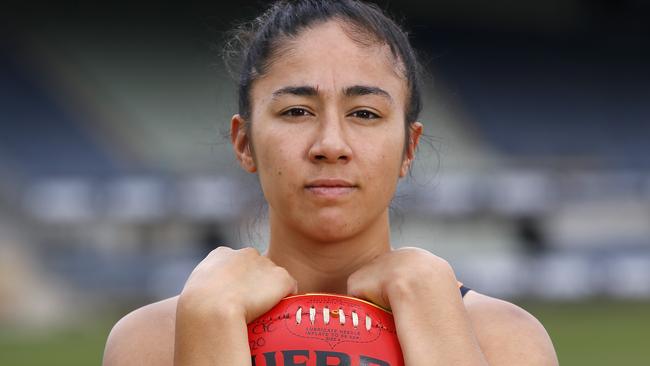
Senior figures in the AFL community hit back, declaring it a necessary part of entering an elite football environment.
But Vescio, a strong advocate for mental health, said testing young men who had not been part of a professional football program could have a detrimental effect and mental wellbeing “should be prioritised, not scoffed at.”
I don’t understand the backlash over clubs no longer doing skinfolds before players are drafted. If we’re serious about mental health and well-being of players (and society) then why slam a change that promotes that?
— Darcy Vescio (@darcyvee) November 8, 2021
The impact of body image issues and fat shaming is deep.
I still have body image issues over skin folds and the fear of being put in “fat farm†https://t.co/vEHsQRwdZJ
— Luke Ablett (@luke_ablett) November 8, 2021
“I don’t understand the backlash over clubs no longer doing skinfolds before players are drafted,” she posted on Twitter.
“If we’re serious about mental health and wellbeing of players (and society) then why slam a change that promotes that?
“The impact of body image issues and fat shaming is deep.
“There’s already game vision available and performance testing during the combine. And don’t forget the players coming into this year’s draft have just been through Covid and lockdowns. Their wellbeing should be prioritised, not scoffed at.”
How the AFL should have handled skinfold tests
A leading sports psychologist says the AFL has missed the opportunity to attack skinfold testing from a positive point of view, rather than ban it.
The league this month scrapped the weight-related tests for draftees ahead of the November 24-25 draft in consultation with the Australian Institute of Sport.
AFL draftees can be tested for skinfolds the moment they step into club land.
The league came under fire on Monday from leading figures such as Kane Cornes for scrapping the weight-related tests. Cornes said young footballers had to become “accustomed” to the practice because they were aspiring to become elite athletes.
Dr Noel Blundell, who had completed psychological assessments at the draft combine since its inception in 1994 and worked with a host of Olympic athletes, said the skinfold tests were worthwhile if appropriate support was provided.
“I think the AFL has missed a major opportunity,” Blundell said on SEN.
“I think they had the chance to reaffirm their role as the major sporting body in the country ... to attack it from a positive perspective and go about putting the appropriate protocols in place, so that a test that does have value can be utilised by the clubs.
“And, more importantly, to assist the players to develop as elite athletes.
“The AFL could’ve taken a step forward and said, ‘We’re a high-class body, we stick to the scientific protocols, we really care about the athletes and their development, and we also want the athletes to be educated in terms of if I’m getting to the next level, what are the facets I need to improve in my game’.”

AFL clubs can continue to test players once they are drafted because they have nutritional guidance and other areas of support for players.
Blundell said skinfold testing needed to be handled correctly.
“Done the right way, the interaction between the psychologist, the nutritionist, the fitness staff and the people collecting the data, then I think we need to show that sensitivity and do it professionally,” he said.
“We have to do be sensitive to the balance, in other words, ‘What does this contribute to elite performance?’, and if any testing is going to be used the athletes need to be educated.
“They need to know what’s this test about, why are we doing it, how does it contribute to my future, how does it allow me to progress as an elite athlete and get the most out of myself.”
Blundell said he had seen fat-shaming occur in swimming and gymnastics over several decades.
“Some of the old-style stuff was pretty average, to put it mildly,” he said.
Blundell said there was more sensitivity towards female athletes compared to males.
“I sort of wonder for the AFLW ... I’m not sure whether there’s some sort of sensitivity in the AFL where this has become too difficult to handle,” he said.
The AFL decision came on the back of health advice that if body composition assessments are to be made, they should be supported by appropriate nutritional and possibly psychological support
The AIS’ position is also that there are limited values to a one-off skinfold measurement.
But because AFL clubs have ongoing nutritional and other areas of support for players they can continue to test senior footballers and new recruits regardless of their age.
Adelaide AFLW captain Chelsea Randall said skinfold testing would have an impact on some young players.
“I wasn’t a huge fan of skinfolds,” she said.
“The pinching was a little unique if you have never had them done before.
“But technology now has changed significantly and we are very lucky where we are able to get something called a DEXA Scan where we basically lay down and you get scanned from head to toe rather than someone pinching you and you know exactly what your lean muscle mass percentage is and your body fat percentage is.
“So we do that pre-season, in the middle of pre-season, in the middle of our season and then at the end of the season.”
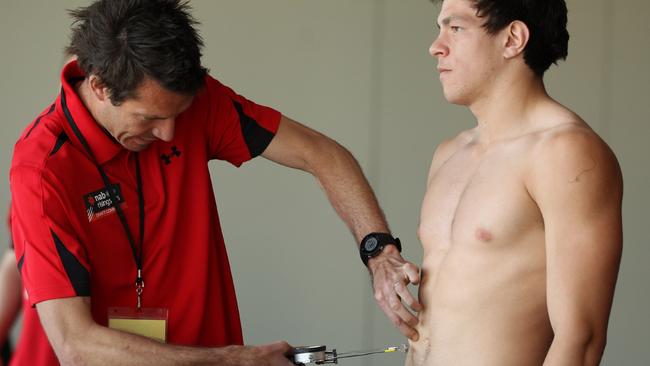
But ex-players and Essendon’s chief executive criticised the decision by the AFL.
Port Adelaide great Kane Cornes, who has previously called out players publicly for being overweight, said the “world has gone mad”.
“This is just ridiculous, what are we setting these players up for,” he said on SEN SA.
“They walk into an AFL club they are going to have their skinfolds tested so I would have thought getting them accustomed to it is a good thing.
“Society has shifted, I understand that but this isn’t your average person off the street this is a person who is aspiring to become an elite athlete and elite athletes I have no issue calling a player overweight, none whatsoever.”
Cornes said he “couldn’t care less” if he was accused of fat shaming players.
“I’ve got no issue calling out players and this is what these draftees have to be accustomed to because if you turn up overweight you will be called out.”
Essendon chief Xavier Campbell said the AFL was a “performance based industry” and a big part of this was “the physical aspect”.
The forgotten draft heroes of SA footy
Jason Horne-Francis is set to end a 15-year drought for South Australia.
The South Adelaide phenom is all but certain to be selected by North Melbourne with the first pick of the AFL draft later this month.
He will be the first No.1 pick from SA since his now Panthers teammate Bryce Gibbs, and just the sixth from the state.
Some of the names from South Australia who have gone at No.1 are well known, some are a little more obscure.
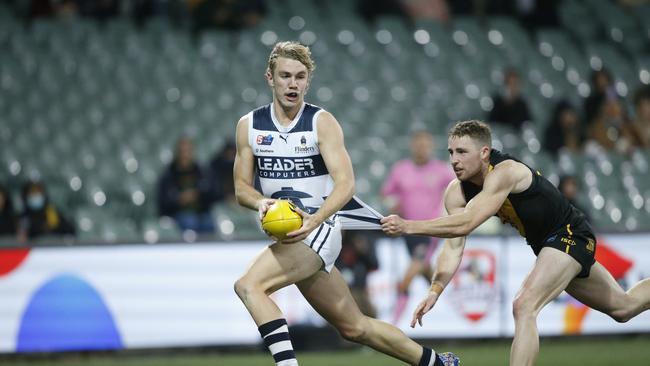
MARTIN LESLIE
1986 – Brisbane Bears, from Port Adelaide Magpies
Leslie was moonlighting in Darwin’s summer league when he became the No.1 pick in the first modern draft.
The Port defender had just won the Magpies’ best-and-fairest months prior and told Brisbane Bears’ recruiter Shane O’Sullivan to not draft him because he didn’t want to leave the SANFL.
In Darwin, with money a bit tight, Leslie was about to fill out a dole form when he picked up a copy of the NT News and found out he had been taken at No.1 by the Bears.
Leslie scrapped that dole form and was off to Brisbane.
He didn’t play for the Bears until 1989, but back then Melbourne clubs still had access to their zones.
In fact, four of that year’s top 10 never played a game.
Leslie himself played 107 matches for Brisbane and won the Bears best-and-fairest in 1990.
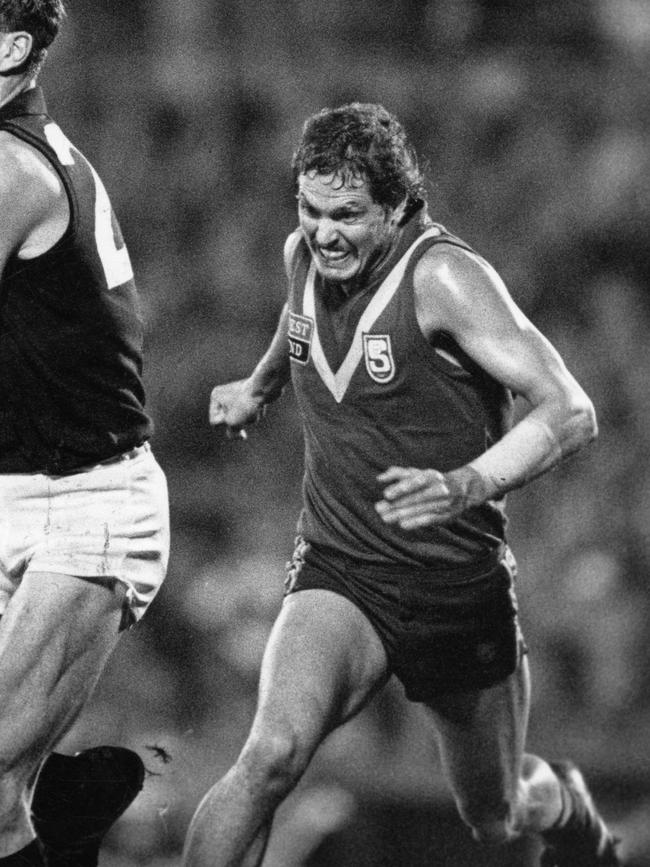
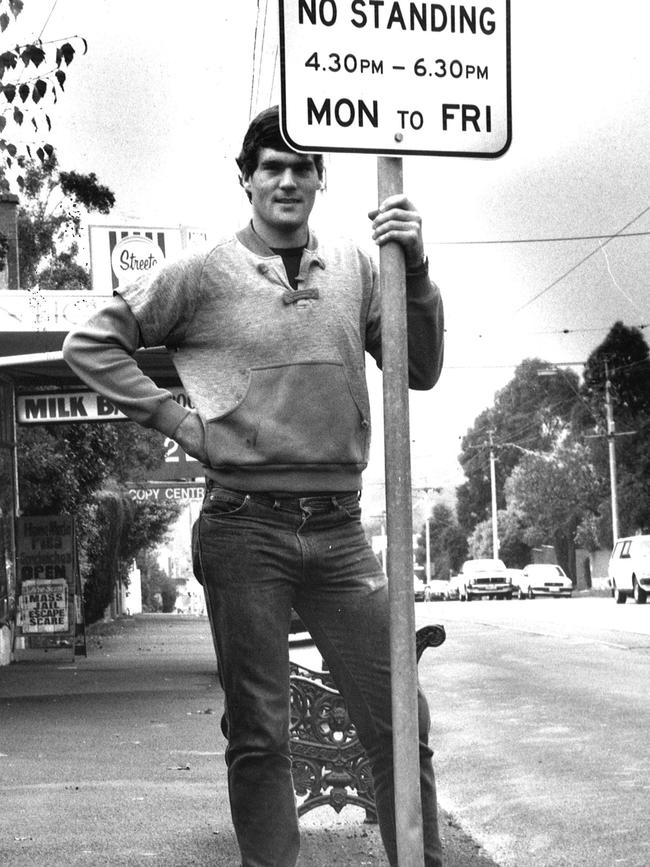
RICHARD LOUNDER
1987 – Richmond, from Central District
Standing at 203cm, and after 16 goals in 42 games for the Bulldogs, Lounder was selected by Richmond with the first pick of the 1987 draft with hype surrounding him.
This only increased when he kicked four goals in his first game for the Tigers.
However, three games later he was dropped.
Lounder was the leading goalkicker for the Tigers reserves in 1989 with 24 but could not get back in the Richmond senior side.
After struggling with homesickness he returned to Adelaide in 1990.
At 116kg, he remains the heaviest player to have played for Richmond and finished his VFL/AFL career with 12 disposals, five goals and five hitouts in four games.
CLIVE WATERHOUSE
1995 – Fremantle, from Port Adelaide Magpies
After having mainly played soccer until he was 17, Waterhouse’s fine season as part of the Magpies’ 1995 SANFL premiership side resulted in Fremantle taking him with the first pick at the age of 21.
Waterhouse took some time to get going in Dockers’ colours through inconsistent form and injury, but he still took out Fremantle’s leading goalkicker award in 1998 with 30 goals.
His best period for the Dockers came when they brought Crows star Tony Modra over from Adelaide in 1999.
In two seasons the two forwards combined for 100 goals.
Waterhouse will forever go down in Fremantle folklore for his inspirational effort in the 2000 “Demolition Derby” against West Coast.
Down by 42 points six minutes into the third quarter, Waterhouse’s career-high seven goals helped the Dockers to a one-point win.
Overall, he played 106 games for the Dockers and kicked 178 goals.
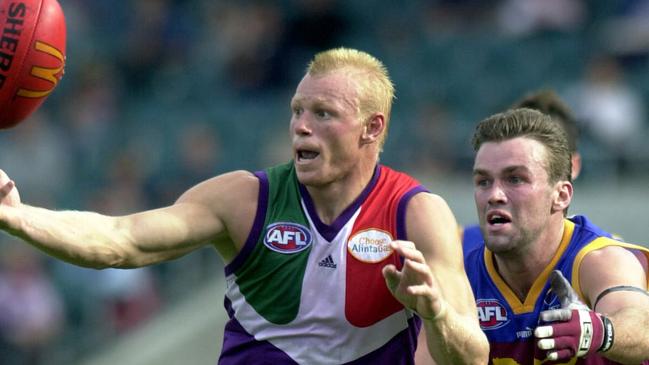
ADAM COONEY
2003 – Western Bulldogs, from West Adelaide
After starring in the under-18 championships for SA and then playing a part in West Adelaide’s run to the SANFL grand final that year, Cooney was selected by the Bulldogs with their priority pick.
He played 19 games in his debut year and from his second season in 2005 he began to emerge as a gun, then a star of the competition.
He became the first, and still only, No.1 pick to win a Brownlow Medal in 2008 when he claimed the prestigious award with 24 votes – one ahead of Simon Black.
After 219 games across 10 seasons at the Bulldogs, Cooney moved to Essendon ahead of the 2015 season.
He played 31 games for the Bombers.

BRYCE GIBBS
2006 — Carlton, from Glenelg
Adelaide officials are still filthy that Gibbs didn’t qualify as the Crows’ first ever father-son player.
At the age of 16, Gibbs made his SANFL debut for Glenelg, where his dad Ross had played 253 games, and despite his tender age he finished third in the club’s best-and-fairest in 2006.
So exciting a talent was Gibbs that the Essendon and Carlton clash in Round 16 2006 was dubbed the “Bryce Gibbs Cup” by some.
That match ended in a draw but Carlton finished last and selected Gibbs with the No.1 pick. Despite not playing a game, Gibbs was named in Carlton’s leadership group for the 2007 season.
He ended up playing 231 games for the Blues, winning their best-and-fairest and being named in the All-Australian squad in 2014.
He returned to Adelaide at the end of 2017 after a high-profile move to the Crows, but the move didn’t work out the way he and the club wanted.
He played for South Adelaide – with Horne-Francis – in 2021.

Originally published as AFL Draft 2021 news: League scraps skinfold testing scrapped draft prospects




